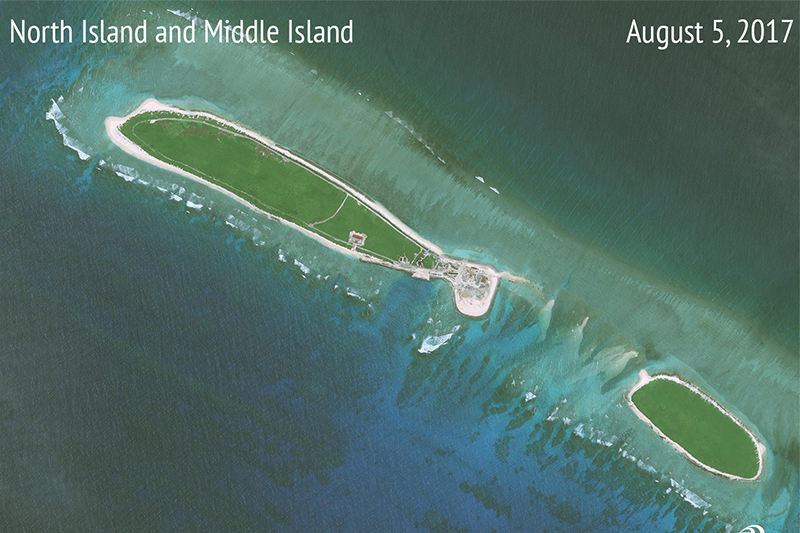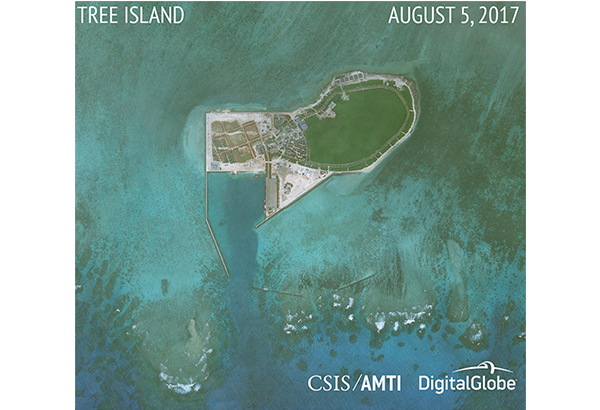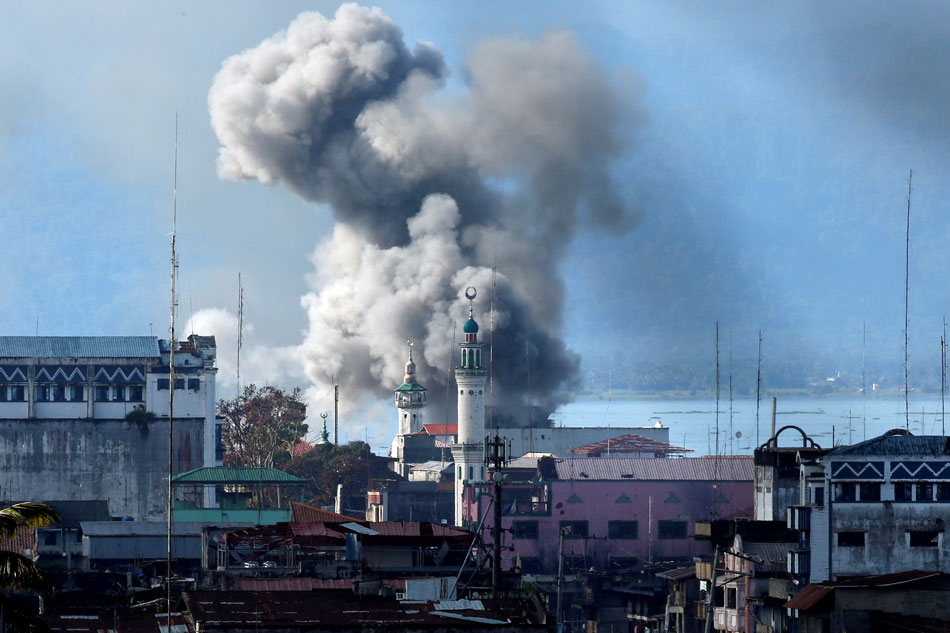From The Diplomat (Aug 11):
What's Behind the New US-Philippines Drone Hype Under Duterte?
A recent controversy has much deeper roots and broader realities which the headlines miss.
On August 7, NBC News cited two unnamed U.S. defense officials as saying that the Pentagon was considering a plan for the U.S. military to conduct airstrikes on the Islamic State (ISIS) in the Philippines, likely with drones, alternately referred to as unmanned aerial vehicles (UAVs) or unmanned combat aerial vehicles (UCAVs). Though the vague report, since officially denied by both governments, may have generated some new hype, to seasoned observers of the U.S.-Philippine alliance, these sorts of conversations are neither new nor necessarily that revolutionary, particularly when viewed in the context of both its deeper roots and broader realities.
Not a New DebateFirst, it is important to acknowledge that controversy about the role of U.S. drones in the Philippines is far from new. Over the past few years, drones had already become caught in the broader domestic politics of the U.S.-Philippine alliance, which – whether this involved the closing of U.S. bases in 1992 or the approval of the Enhanced Defense Cooperation Agreement (EDCA) in 2014 – have centered around the core issue of the extent to which Washington is and ought to be directly involved in military operations within the country and how the Philippines should balance the need for security with the desire to preserve its sovereignty (See: “
Recalibrating the US-Philippine Alliance Under Duterte”).
With respect to drone operations more specifically, among the more prominent controversial cases in the alliance over last decade include
accounts that U.S. forces used a Predator drone in 2006 to try to kill Indonesian terrorist Umar Patek in the Philippines, during the aftermath of the war on terrorism and the U.S. battle against the so-called Al-Qaeda offshoot Jemaah Islamiyah (JI), and, more recently,
reports that U.S. drones provided intelligence to Philippine National Police Special Action Force (PNP-SAF) commandos in the Mamasapano incident back in 2015 that ended up seeing one of the greatest single-day combat losses in recent history.
In each of those two cases, there was scrutiny not just on the specific role that U.S. forces played – often without much substantiated evidence – but also on Washington’s presence in the Philippines and the U.S.-Philippine alliance more generally. It is therefore no surprise that, even though both governments officially maintain that no strikes have been authorized, some voices in the Philippines have already begun agitating against any kind of agreement.
Not a Revolutionary Move Second, the idea of such an operation as reported would not be entirely revolutionary given both the extent of current U.S. involvement as well as the potential steps that could be taken in that direction.
As I have noted before, the United States has had a longstanding presence in the Philippines, including for counterterrorism efforts, and part of that presence, though reduced since the deactivation of the Joint Special Operations Task Force-Philippines (JSOTF-P) which had been in place from 2002 to 2015, has been assisting with surveillance capabilities that Manila does not have (See: “
US Terror Aid to the Philippines Signals Enduring Defense Ties Under Duterte”). Though U.S. and Philippine officials tend to be wary about disclosing the specific nature of that presence, in particular the shape of U.S. technical assistance to Philippine forces, they have occasionally given a general sense of where things stand publicly while privately indicating key data points.
For instance, in September last year, when Duterte was busy
railing against the U.S. military presence in the Philippines,
Lorenzana told the Philippine legislature what most close observers already knew: that there were already a small group of 107 U.S. soldiers based in Zamboanga City conducting surveillance operations in Zamboanga, Basilan, Sulu, and Tawi-Tawi, using both aircraft as well as drones. He was careful, though, to publicly clarify that their role was restricted to sending those surveillance assets to areas that the AFP had identified, rather than authorizing strikes, approving targets, or being directly engaging in combat operations.
Accounts from U.S. and Philippine defense officials reveal that there has also been a bit of a stepping up in Washington’s role in recent months, even though some of this has been done quietly particularly in the wake of the siege in Marawi City by Islamic State-linked militants on May 23. In late July, for instance, Lorenzana offered a peek into this when he said that Washington would give the Philippines Boeing Insitu ScanEagle UAVs, aside from other related assistance earlier this year, including the Aerovironment RQ-11 Raven hand-launched UAVs given for the use of the Marine Special Operations Group and, beyond drones, new Cessna 208B “Caravan” ISR aircraft.
To be sure, the idea of greater U.S. involvement in such drone or surveillance operations – whether in terms of direct boots on the ground in the most extreme sense, or to lesser degrees like a more involved U.S. role in drone operations though still ensuring sufficient coordination with Philippine forces – would be substantively different from the advise, assist, training, and capacity-building role.
But as Philippine defense officials, including Lorenzana and AFP chief Eduardo Ano have said, variations of such a role would not be unfathomable; things would just need to go through a appropriate process, including discussions at the proper level and approvals from the necessary parties to make sure it is in line with Philippine law and would address potential concerns including ones related to sovereignty. On the U.S. side, there have also been some proposals floating around, including the one from U.S. Vice Chairman of the Joint Chiefs of Staff Paul J. Selva who told the Senate last month that he supported the idea of reinstating a named operation to provide for the necessary resources and authorities.
Unfortunately, the meticulous details that would be crucial to determine how such a role would work – as they have been in previous instances including during JSOTF-P’s tenure – are glossed over in the NBC report, making it of little value in terms of assessing how things might play out policy-wise. Authorization is said to come from collective self-defense, but the article admits that it is unclear how that process of authorization would proceed, what that authorization would be for – whether intelligence-sharing or strikes themselves – or even whether or not the drones sent would be armed or not.
But lest we get lost too far down in the weeds of these operations and the U.S. role in the Philippines, it is also important to recognize two other broader realities to properly contextualize the current controversy: reconnaissance and surveillance capabilities in general are a dire need for the Philippine military; and the United States is far from the only source of these capabilities and the only actor subject to the limitations of the Philippine domestic context.
Not a Luxury, But a NeedFirst, though the United States no doubt has its own interest in boosting security ties with an ally and deepening its own military presence there for various reasons, the starting point for any discussion on this subject ought to be the core of the issue: the sober reality that the Philippines has a deep and urgent need for surveillance and reconnaissance capabilities, both generally as well as now amid this terror threat.
Intelligence, surveillance, and reconnaissance capabilities (or ISR, for short) is a catch-all term for a whole range of capabilities that can address a wide spectrum of challenges which the Philippines has, from humanitarian assistance and disaster relief (HADR) to maritime security to terrorism. And the fact is that Manila lacks these capabilities due to a variety of reasons, limiting its ability to surveil its own waters as well as the rural terrain in the southern part of the country (See: “
The Truth About Philippine Military Modernization and the ‘China Threat’”).
With respect to counterterrorism more specifically, even with U.S. assistance following the September 11 attacks including JSOTF-P from 2002 and 2015, the Philippines had still struggled to crack down on militants because its capability gaps – from aging, barely capable aircraft to the lack of precise strike capabilities to the lack of training and other command and control issues – were so wide. One U.S. source familiar with the American role during this period in the Philippines told me on condition of anonymity this week that even despite being warned about these gaps before being on the ground, “just the range of issues…was just shocking to see when you put it together.”
These capability gaps have been evident as Philippine security forces have been addressing the Marawi crisis while also tracking threats developing in other hotspots in Mindanao as well (See: “
Why Has the Philippine Military Struggles in its Terror Fight Under Duterte?”). Philippine defense officials are quite candid in private about these deficiencies, and Lorenzana in particular has been emphasizing this point publicly as well to highlight the gravity of the situation.
Indeed, back in June, he was probably about as frank as a defense chief could be about this deficiency, saying that the Philippines would welcome “any technical assistance that our allies can provide” while the Philippine military was in the process of developing such capabilities.
Not Just About the United StatesSecond, as Lorenzana and other Philippine defense officials have noted, the United States is not the only country which the Philippines is seeking these capabilities from. Accordingly, Washington is far from the only country that is subject to some of the issues in Philippine that such a role raises, even though it does tend to dominate the headlines more so than others.
With respect to its own capabilities, the Duterte administration is beginning to take steps to acquire assets directly, including drones (See: “
What’s Next for Philippine Military Modernization Under Duterte?”). On July 24, during a press conference following his annual State of the Nation (SONA) address, Duterte said that he would be acquiring drones to support Philippine security forces. Though Duterte has been known to get ahead of reality, there is evidence that this is actually moving along.
For example, reports indicate that the Duterte administration is now moving forward with acquiring Israel’s Elbit Systems’ Hermes 900 Kochav (Star) unmanned aerial vehicle.
The Philippines has also been getting help from some of its external partners.
For instance, Australia has already been providing its AP-3C Orion military planes to help with surveillance in Marawi. Meanwhile, Singapore, which has been upgrading its own drone capabilities over the past few years, last month pledged to send a detachment of UAVs to the Philippines as part of a broader assistance package (See: “
Singapore Gives Philippines Military Aid to Fight Islamic State Threat”).
These actors are not immune to the vagaries of Philippine politics, though, of course, the degree to which this is the case tends to vary. To take just one example, when Lorenzana announced the deployment of Australian planes, he was careful to say that Canberra’s role in providing technical assistance to the Philippines would not require the embedding of Australian Defense Forces (ADF) personnel with Philippine troops on the ground.
This is not the first time we have heard about U.S. drone operations in the Philippines, and it probably will not be the last either from what we have seen over the past decade alone. Given how little is still publicly known about these engagements and how much they tend to be hyped up when they make the headlines, it is worth keeping in mind some of the deeper roots and broader realities as well moving forward.
http://thediplomat.com/2017/08/old-us-philippines-drone-hype-strikes-anew-under-duterte/








